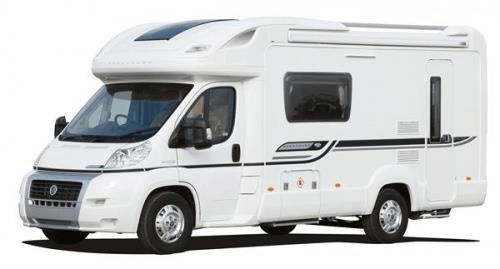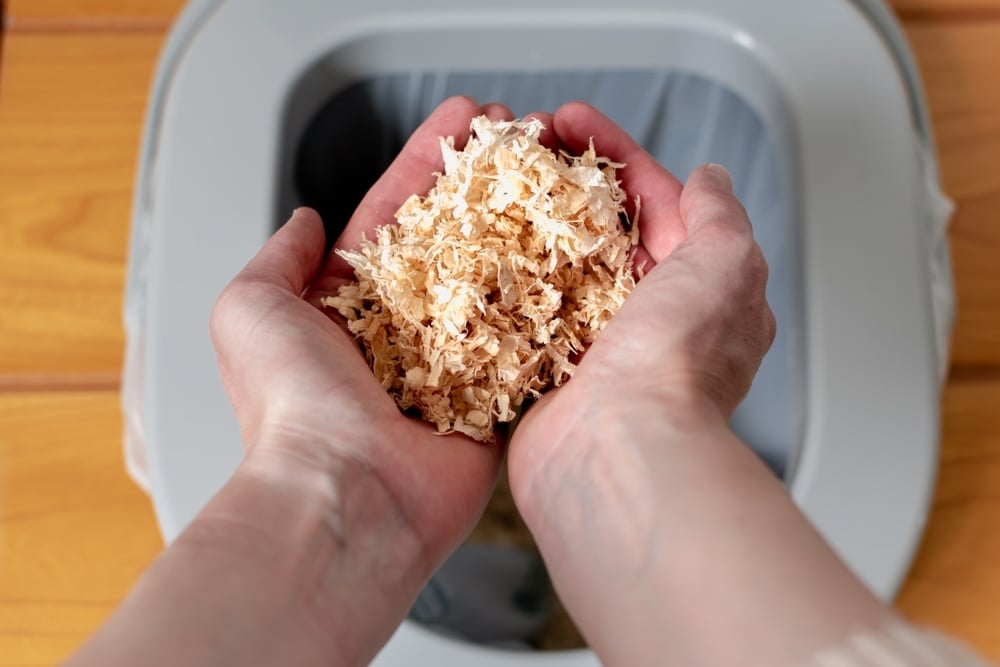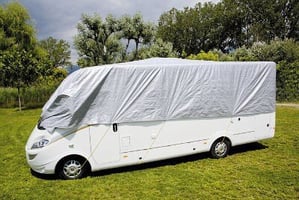How often do you clean your motorhome? For some, the answer might be ‘frequently', but for others...
Here’s a personal question for you - do you like using the facilities on board, or do you always look to ‘go’ elsewhere?! I know for some that it’s always the latter, with some of the reasons being that they don’t want to be dealing with the potential smells, the cleaning process and the disposal of, well, everything. However, most (if not all) motorhomes and campervans have a toilet on board, for convenience, and also because it came with the vehicle in the first place.
Sometimes it’s the chemicals that have put people off, but fortunately there have been many advancements in this area and we now have many options available to us in terms of chemical-free toilets, which can make for an environmentally-friendly and hopefully hassle-free solution for those in a motorhome.
But what exactly makes chemical-free toilets so beneficial, and what are some of the options available? Let’s have a look…

Why opt for a chemical-free toilet?
1. It’s more environmentally friendly than using chemicals
One of the most significant advantages of chemical-free toilets is their environmental impact. Traditional motorhome toilets often rely on harsh chemicals to break down waste and control odours. These chemicals, while effective, can be harmful to the environment, especially when they are not disposed of correctly. Chemical-free toilets eliminate the need for these substances, offering a greener alternative that’s kinder to the planet.
2. It’s probably healthier for you
Using a chemical-free toilet reduces your exposure to potentially harmful substances. The chemicals used in traditional toilets can cause skin irritation or respiratory issues, especially in enclosed spaces like a motorhome. And let’s be honest, they don’t smell very nice either. By choosing a chemical-free option, you can create a healthier environment inside your motorhome, which is especially important for families with children or anyone with allergies, or sensitivities to certain chemicals.
3. It’s potentially cost-effective
Over time, the cost of purchasing chemicals for your toilet can add up. Chemical-free toilets, on the other hand, often come with lower long-term costs because they don’t require these ongoing purchases. While the initial investment might be higher due to purchasing the equipment, you could save a bit of money in the long run by avoiding the need for chemicals.
4. It can be easier, maintenance-wise
Managing a traditional motorhome toilet can be a bit of a hassle, especially when it comes to cleaning and emptying the tank, and they do need to be regularly maintained to ensure they work properly. Chemical-free toilets are designed to simplify this process. Without the need to measure and pour chemicals, you’ll likely find that maintaining a chemical-free toilet is straightforward and less messy.
OK, sounds good so far. So what are some popular types of chemical-free toilets?
There are several types of chemical-free toilets available on the market, each with some unique features and benefits. Here are a few examples:
1. The SOG system
The SOG system is one of the most popular chemical-free options for motorhomes. It works by venting odours directly outside through a small fan system, which activates automatically when the toilet is in use. This method eliminates the need for chemicals to control odours, making the SOG system a truly environmentally-friendly choice. The fan used also creates a slight vacuum, which helps break down waste more efficiently, and the system can be retrofitted to your existing toilet.

2. Dry composting toilets
Composting toilets are another excellent chemical-free option. These toilets use natural processes to break down waste into compost, which can be safely disposed of or even used as fertiliser in some cases. Composting toilets are completely self-contained and require no water, making them ideal for off-grid motorhomers. Some have agitators to help kick start the composting process, and others use a layering system whereby you cover up the contents with a layer of composting agent (litter) each time. They’re also incredibly low-maintenance, needing only occasional emptying and the addition of composting material such as sawdust.
Do check in advance what type of toilet paper is suitable for this process, however.
Note that ‘compost' and ‘composting’ toilets are different. A compost toilet typically refers to a unit or container that temporarily stores waste, which is later treated or composted elsewhere. In contrast, a composting toilet actively processes and composts the waste directly within the toilet itself.

3. Waterless toilets
Waterless toilets, as the name suggests, don’t use any water to flush waste away. Instead, they rely on a dry separation system where liquid and solid waste are kept separate. This separation not only reduces odours but also minimises waste volume, making disposal easier and more efficient. Waterless toilets are a great choice for those looking to conserve water and avoid the need for harsh chemicals. Also, with these, often the integrated fan system draws out any smells from the toilet to eliminate odours efficiently from your motorhome.
You can also get waterless bag-lined toilets, which need emptying frequently as the contents remain in the bag. People even make their own ones of these (think: a bucket and a swimming noodle!) We jest…

Making the switch
Switching to a chemical-free toilet in your motorhome is likely a decision you won’t regret. Whether you opt for a SOG system, a composting toilet or a waterless model, you’ll enjoy the benefits of a healthier and more sustainable motorhome experience. Plus, with easier maintenance and potential lower long-term costs, chemical-free toilets are as practical as they are eco-friendly.
So, the next time you’re planning a trip in your motorhome, consider upgrading to a chemical-free toilet. It’s a small change that makes a big difference - for you, for your family, and for the environment.







